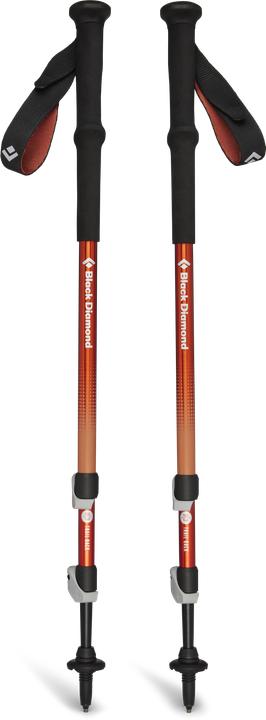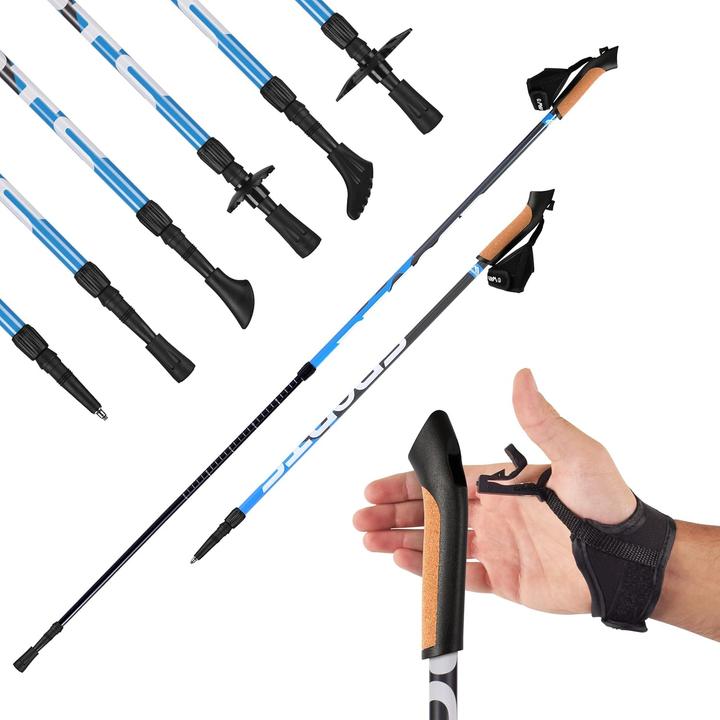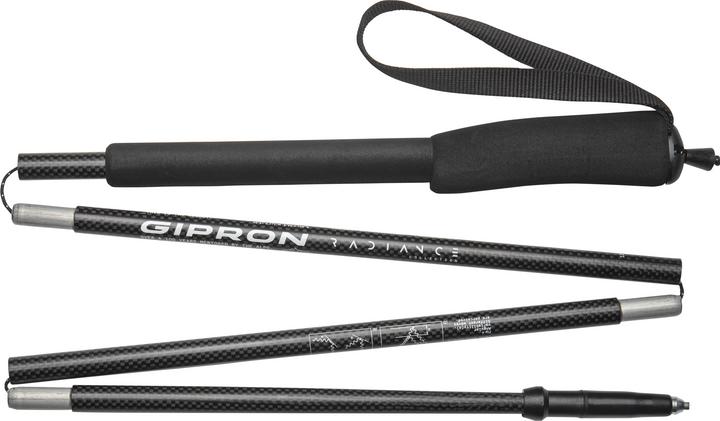
Too Many Trekking Poles? Here’s How to Choose the Right Ones
Trekking poles come in many styles and materials. Here are five key factors to help you pick the best pair for your next adventure.
Last updated 1 week ago. Automatically generated content.


Select options and limit the number of products
Stock construction refers to how trekking poles are designed to extend, collapse, or remain fixed in length. The construction type affects portability, ease of adjustment, and overall suitability for different hiking styles and environments.
Popular options (you can select more than one)
Telescopic pole
Typical price
54.– to 110.–Features multiple sections that slide into each other, allowing the pole to be extended or collapsed as needed.
Offers flexible length adjustment, making it versatile for varied terrain and easy to pack for travel.
Bestseller
Folding stick
Typical price
110.– to 150.–Consists of segments connected by an internal cord that fold down into a compact size.
Ideal for those seeking lightweight, highly packable poles for travel or fast-and-light hiking.
Bestseller
Fixed length stick
Typical price
61.– to 120.–Made as a single, non-adjustable piece set to a specific length.
Provides maximum rigidity and durability, best for users who prioritize stability and do not need to adjust pole height.
Bestseller
The material group of trekking poles determines their weight, durability, and comfort during use. Choosing the right material impacts how easy the poles are to carry, how long they last, and how they perform in various trail conditions.
Popular options (you can select more than one)
Carbon
Typical price
100.– to 150.–Made from lightweight carbon fiber, these poles are easy to carry over long distances.
They reduce arm fatigue and are ideal for fast-paced hikes or long treks where every ounce counts.
Bestseller
Metal
Typical price
54.– to 110.–Typically constructed from aluminum, metal poles offer strong durability and resistance to bending.
They are a solid choice for rugged trails or colder climates where strength and reliability are priorities.
Bestseller
Wood
Typical price
61.– to 120.–Wooden trekking poles provide a natural look and feel, with moderate weight and unique aesthetics.
They are valued for comfort and tradition, making them suitable for leisurely walks or those who prefer a classic style.
Bestseller
Length refers to the measurement of trekking poles when extended for use, which affects comfort, efficiency, and posture while hiking. Choosing the right length is important to ensure proper support and reduce strain on joints, especially on varied terrain.
Popular options
105 - 115 cm
Shorter poles suited for individuals of shorter height or for steep uphill climbs.
Provide better maneuverability and control on technical trails or for users under approximately 5'5" (165 cm).
Bestseller
116 - 130 cm
Medium-length poles fit most users and general hiking scenarios.
Offer a balance between support and versatility, making them ideal for those between 5'6" and 6'1" (167-185 cm).
Bestseller
131 - 140 cm
Longer poles designed for taller individuals or for those preferring extra reach.
Enhance stability and comfort for users over 6'1" (185 cm) or on gentle downhill sections where a longer pole helps with support.
Bestseller
Weight refers to how much the trekking poles weigh, which affects carrying comfort and fatigue during use. Choosing the right weight is important for balancing ease of transport with durability, especially on long hikes or challenging terrain.
Popular options
140 - 220 g
Extremely lightweight poles, often made from advanced materials such as carbon fiber.
Ideal for ultralight backpackers or fast-paced hikes, minimizing arm fatigue over long distances.
Bestseller
221 - 364 g
Moderately light poles that balance weight and strength, typically using a mix of aluminum and carbon.
Suitable for most hikers, offering a good compromise between comfort and durability on varied terrain.
Bestseller
365 - 540 g
Heavier poles, usually constructed from robust aluminum for increased strength and reliability.
Best for those who prioritize durability and stability, such as on rocky trails or when carrying heavy packs.
Bestseller
Choosing a trekking pole brand shapes your experience in terms of reliability, durability, and user comfort. Leading brands like Black Diamond, Leki, and Forclaz cater to different needs—whether you want advanced features, ergonomic grips, or affordability—helping you find the right fit for your hikes.
Popular brands (you can select more than one)
Black Diamond
Recognized for premium build quality, innovative locking mechanisms, and robust aluminum or carbon fiber designs.
Offers excellent comfort and long-term durability, well-suited for demanding hikes and frequent use.
Bestseller
Leki
Specializes in ergonomic grips and advanced shock absorption technology.
Ideal for users seeking joint-friendly support and customizable fit, especially on long treks.
Bestseller
Steinwood
Focuses on lightweight, versatile trekking poles at competitive prices.
Appeals to casual and budget-conscious hikers looking for reliable performance without extra frills.
Bestseller

Steinwood Carbon Wanderstöcke, Leicht, Verstellbar, mit Gummipuffern und Tragebeutel, Faltbar 135cm
115 - 135 cm
Deuba
Offers basic, entry-level trekking poles suitable for occasional outings.
A practical option for beginners or those who want an affordable starter set.
Bestseller
Forclaz
Known for functional designs and good value, available through Decathlon stores.
Balances price and performance, making it a strong choice for new trekkers or group outfitting.
Bestseller







